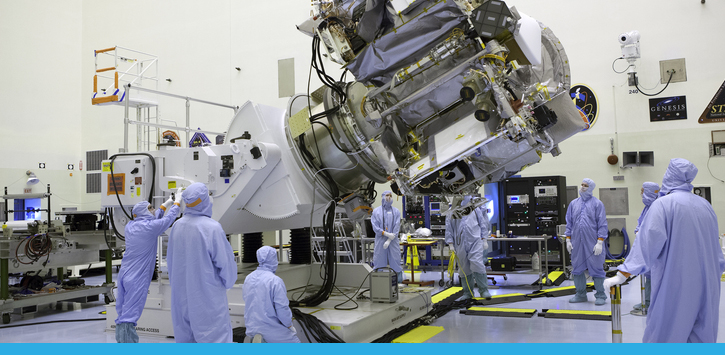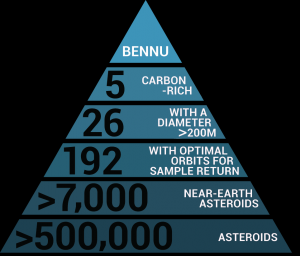Following Science in Space: NASA’s Asteroid Mission
Love space science? Follow us on Instagram for live STEM events throughout the year, including the SpaceX Crew Dragon test flight on March 2, 2019.

Two and a half years ago on September 8, 2016, I was able to witness the launch of OSIRIS-REx to share with our school community.
I’m sure you’re wondering what that means, right? OSIRIS-REx is a NASA asteroid study and sample return mission. OSIRIS-REx stands for Origins, Spectral Interpretation, Resource Identification, Security Regolith Explorer. Its main goal is to obtain a sample of at least 60 grams of rock from an asteroid called Bennu, a near-earth asteroid with lots of carbon in it. Now if you’re wondering exactly how much 60 grams is, one candy Skittles is approximately 1 gram. Imagine 60 of those and that’s how much of Bennu we will be bringing back to the Earth. And wait for it…it will take seven years before the mission is completed!
During our live lessons for Earth Space Science, we’ve been discussing current science events and all things space – including updates from Bennu.
The reason this mission is so important is because Bennu may hold the earliest record of our solar system. If we bring a piece of it back to the Earth, scientists may be able to figure out the origins of life. Bennu is also one of the asteroids that has a very high probability of impacting the Earth late in the 22nd century. OSIRIS-Rex will be able to determine Bennu’s physical and chemical properties. This information is very important for future scientists when developing an impact mission for approaching asteroids.
There were strict guidelines in planning for this mission! This chart show the criteria NASA sought for the asteroid.

On December 3, 2018, OSIRIS-REx arrived to Bennu after a two-year journey of 1.4 million miles.
Already, scientists have obtained some cool information about this little four-mile long asteroid. They have found that there is a presence of molecules on the asteroid containing oxygen and hydrogen atoms bonded together known as hydroxyls. Scientists think hydroxyl groups exist globally across the asteroid in water-bearing clay minerals. What this means is that the asteroid material had an interaction with water at some point. Scientist say that Bennu is too small to have ever had its own water, but the findings indicate that liquid water was present at some time on Bennu’s parent body (likely a much larger asteroid).

The new surface material is a mix of very rocky, boulder-field regions and a few relatively smooth regions that lack boulders. Scientist were surprised to see that the number of boulders on the surface were much higher than they expected.
The principal investigator on the mission, Dante Lauretta, stated that “[The] spacecraft is healthy and the science instruments are working better than required. It is time now for our adventure to begin.”
OSIRIS-REx, however, will not be taking a soil sample for another nine months. OSIRIS Rex will be surveying Bennu to find the best spot to stop for a sample. Currently, the spacecraft is doing a preliminary survey of the asteroid, flying over its north and south poles as it ranges as close as 4.4 miles to better determine the mass of the asteroid. This is important to know because the mass of the object will determine the gravitational pull on the spacecraft. The spacecraft will not actually land on the asteroid, but hover over it and take a core sample.
OSIRIS-REx will head back to the Earth around March 3, 2021, and will hopefully return on September 24, 2023. I think it’s safe to say, OSIRIS-REx will be worth the seven-year wait!

I will keep you posted on this cool little mission as it progresses. Until then, if you would like to know more about the mission, you can visit https://www.nasa.gov/osiris-rex.
Interested in a career in space exploration or other STEM-related fields? Consider enrolling in one of our Career & Technical Education (CTE) courses! CTE helps students prepare for the future with foundational knowledge and real-world skills. Learn more at FLVS.net/CTE.
Follow FLVS for More Space Science!
This weekend, I will be attending a live event for an upcoming SpaceX launch to test their Crew Dragon vehicle for future astronaut flights. FLVS Kindergarten teacher Cara Piper and I will be sharing live updates with our students and followers on social media. Join us by following @floridavirtualschool on Instagram!
Cover Image Credit: NASA/Dimitri Gerondidakis
